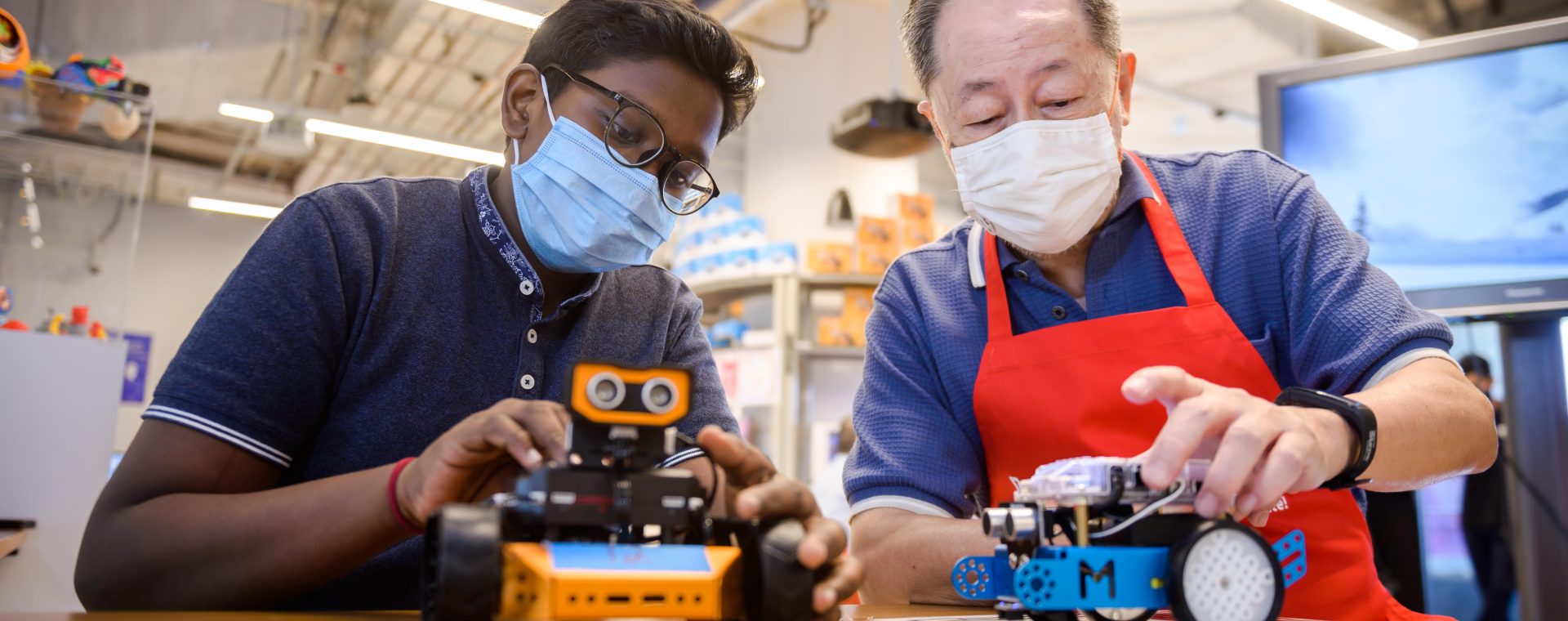
For thousands of years, libraries have served as gateways to knowledge and culture. They functioned as important and trusted institutions that support learning and research. Today, we read about legendary ancient libraries such as the Library of Ashurbanipal and the Library of Alexandria – awed by not only the size of their wondrous collections but also the prominent role they occupied in society. In the last hundred years or so, libraries have also become social levelers by making their collections freely available to the public.
So, what does the future hold for libraries, and more importantly, will they be disrupted like many other businesses?
These were strategic questions we set out to answer at the National Library Board (NLB) in Singapore about 18 months ago. While we consistently serve about 7 in 10 residents in Singapore every year, we could not take our long-term relevance for granted. The raison d’être of libraries was being seriously challenged, with the Internet making information and knowledge readily accessible. The proliferation of affordable modes of entertainment also competed for mindshare.
At the same time, continuous learning has become much more important, driven primarily by rapid technological advances. With increasing longevity, there are also health benefits of staying mentally active through learning. Building on their traditional strengths, libraries can therefore play a prominent role within a national learning ecosystem, alongside schools and institutes of higher learning (e.g. universities), employers that provide workplace learning opportunities as well as increasingly, EdTech companies. Given their broad appeal, libraries are uniquely positioned to support lifelong learning – from cradle to grave.
To do so effectively, libraries need to make three key shifts. First, libraries must broaden their collection beyond books, to a wider array of learning resources. Apart from books, many of us also learn by listening to podcasts, watching videos, reading articles and attending programs. To support these different modalities of learning, NLB has therefore been aggressively expanding our collection and organizing programs to provide exposure for our patrons to emerging trends and topics. Our patrons can, for example, attend an online training program on say, data analytics through LinkedIn Learning from their home, or learn how to do 3D printing through a hands-on workshop in one of the specialized laboratories we have built within our public libraries. For seniors, we have also started deploying digital ambassadors across all our public libraries to provide one-on-one assistance, to help them learn and gain confidence in using basic digital skills. This is an important initiative to bridge the digital divide.
Second, libraries must support not only individual learning, but also facilitate learning within groups and communities of like-minded individuals. Most libraries already run vibrant reading clubs and these offer a springboard from which to build learning communities. As community spaces, libraries can help connect patrons with similar learning interests. By making available relevant resources including the use of spaces, libraries can nurture the growth of learning communities. NLB has started to seed and support such community-driven initiatives. There is now a handful of active learning communities in our libraries, ranging from a group that comes together to learn how to play the ukulele, to another that explores different aspects of the Qing Dynasty. With the strong public response, we plan to catalyze many more learning communities.
Third, libraries must personalize the experience and strengthen the scaffolding for learning. Library-goers have traditionally relied on luck to find a book they are interested in through browsing the shelves, or a knowledgeable librarian to recommend it to them. While we seek to retain the magic of serendipity in a library visit, there is scope to increase discoverability and better curate the expanding array of learning resources, particularly by tapping on technology. There is much to learn from how companies like Amazon and Netflix use machine learning to recommend books and movies to their customers. NLB has started to define how learning pathways can look like, from the perspective of our patrons, and identify how different learning resources can be strung together to help learners build on their learning. We have also begun to experiment with the use of data and algorithms to offer personalized book recommendations to our patrons.
We are in the early stages of our transformation. Our vision is for NLB and our librarians to become learning stewards, who continually inspire and excite our patrons to learn more, both in areas that are of deep interest to them, but also to occasionally nudge them to venture into topics that may seem somewhat alien. Building partnerships with other stakeholders within this learning ecosystem is integral to these efforts, and the unique value proposition that NLB brings to the table will be our relentless focus on the joy of learning.
Libraries have a major role to play in a post-COVID world. The extent to which they evolve and reimagine how they support lifelong learning will determine their continued relevance.


